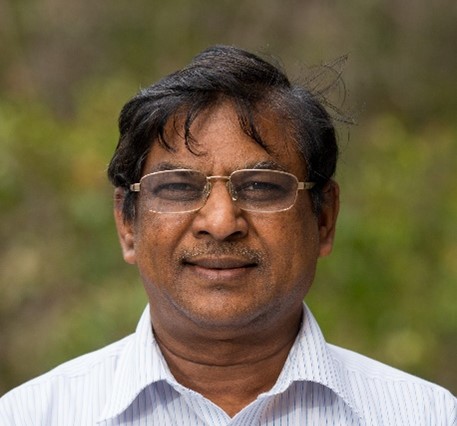Environmental detection and remediation
Facilitated by Professor Andrew Ball (RMIT University)

Professor Andrew Ball (RMIT University)
Field based detection and remediation strategies for microplastics
Abstract not available.

Julia Jaeger (Eurofins ANZ)
Advancing microplastic analysis: from laboratory inception to accreditation
In 2019, Eurofins Environment Testing marked a significant advancement in by establishing a state-of-the-art laboratory dedicated to Microplastic testing. This facility is outfitted with the Agilent 8700 Laser Direct Infrared (LDIR) Chemical Imaging System to analyse Microplastics. Our team has adapted methodologies from existing literature and standards to align with our ISO/EC 17025 accredited environmental laboratory operations, thus ensuring high precision and reliability in our analyses. Our current setup allows us to determine the size (ranging from 20 to 5000 µm), morphology, colour, and identity of microplastics in various matrices, including clean and environmental waters, soils, biosolids, sand, sediment, and biota for routine commercial samples. A key aspect of our approach is the implementation of rigorous QA/QC measures, significantly minimising analytical uncertainty. A notable milestone was the award of our ISO/IEC 17025 accreditation by NATA for the testing of Microplastics in Potable Water in November 2023, making us the first accredited laboratory for Microplastics testing in the Southern Hemisphere. This presentation will outline our journey from the laboratory’s establishment to achieving accreditation, emphasising our contributions to environmental science and microplastic research through studies conducted in our laboratory.

Dr Fereshteh Nayyeri (CSIRO)
Advancements in AI for automated marine litter detection and management
Marine scientists utilize diverse methods to monitor macro-litter in aquatic environments. Monitoring floating litter poses a significant challenge as conventional identification methods demand labour-intensive visual recognition. Recent AI developments that use deep-learning-based litter detection offer promising cost-effective solutions. Our project utilizes AI technology with cameras over Sydney’s waterways to capture and analyse images of floating litter. Our project has developed computer vision models that can accurately identify and classify litter types and quantities flowing down our urban waterways. Our technology has the potential to reduce manual visual survey effort and improve data accuracy. Our approach enhances the efficiency of litter management and waterway health.
Presentation not available. Please contact the presenter directly.

Dr Phoebe Lewis (EPA Victoria)
Emerging contaminants program at EPA Victoria
EPA Victoria’s emerging contaminant program focuses on a variety of synthetic and naturally occurring chemicals that have little to no data on the occurrence, levels, origins or behaviour in the environment. Our research program aims to detect, track and evaluate the ecological and human health risks posed by these contaminants.
Presentation not available. Please contact the presenter directly.

Dr Mehran Rashti and Dr Xiangyu Liu (Griffith University)
Microplastic pollution in agricultural lands
Microplastics (MPs) have emerged as a significant contaminant in agroecosystems due to their extraordinary resistance to degradation in terrestrial environments. We studied the characteristics and risks associated with MPs in biosolids and biosolid-amended soils. The research delves into determining the concentration, size distribution, and chemical composition of MPs in sewage sludge biosolids and agricultural soils amended with biosolids, shedding light on their potential impact on soil biota, particularly earthworms. Our study emphasized the crucial need for continued investigations into the fate and detrimental effects of microplastics on soil biota, in environmentally relevant scenarios, to safeguard soil ecosystems from the pervasive threats posed by microplastics in agricultural settings.

Professor Megh Mallavarapu (The University of Newcastle)
Microplastic pollution and remediation strategies: challenges and solutions
Microplastics (MPs) have become ubiquitous in the environment due to continuous dumping of waste containing plastic polymers, coupled with their slow degradation rate and inadequate removal technologies. MPs have been shown to adversely affect human and ecological health, necessitating their removal from the environment. This talk will discuss the advantages and limitations of the available MP remediation technologies and further highlight the potential biotechnological approaches for MPs management in the environment.
